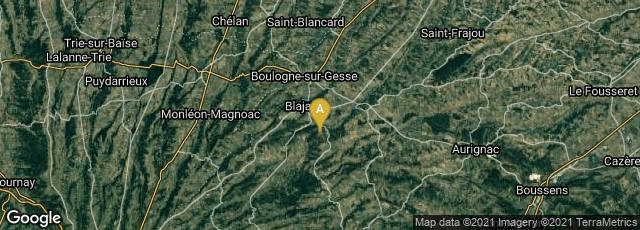

A: Lespugue, Occitanie, France
The Venus of Lespugue, an ivory Venus figurine discovered by René de Saint-Périer in 1922 in the Rideaux cave of Lespuge (Lespugne) in the Haute-Garonne, is approximately 6 inches (150 mm) tall. It is preserved at the Musée de l'Homme, Paris.
"Of all the steatopygous Venus figurines discovered from the upper Paleolithic, the Venus of Lespugue, if the reconstruction is sound, appears to display the most exaggerated female secondary sexual characteristics, especially the extremely large, pendulous breasts.
"According to textile expert Elizabeth Wayland Barber, the statue displays the earliest representation found of spun thread, as the carving shows a skirt hanging from below the hips, made of twisted fibers, frayed at the end" (Wikipedia article on Venus of Lespugue, accessed 06-04-2014).
Pétillon, Historique des fouilles de R. de Saint-Périer dans les sites paléolithiques des gorges de la Save (Lespugue, Haute-Garonne), Préhistoire du Sud-Ouest, 20 (2012) no. 2, 213-219.
Barber, Women's Work: The First 20,000 Years: Women, Cloth, and Society in Early Times (1994) 44.